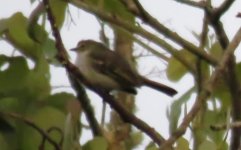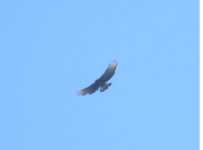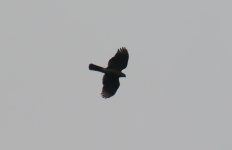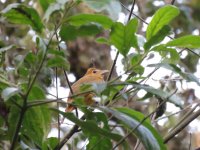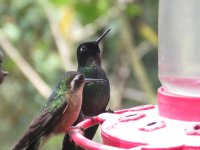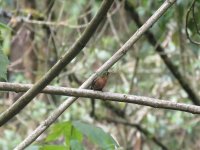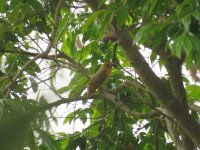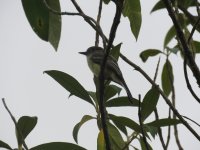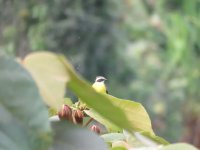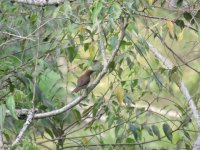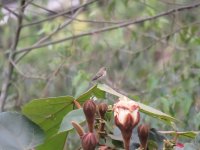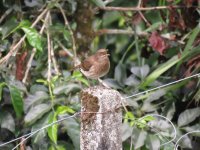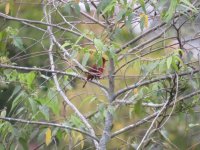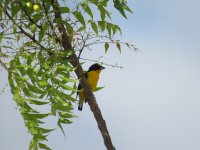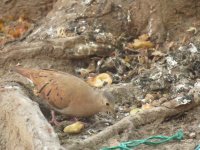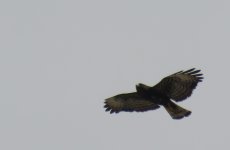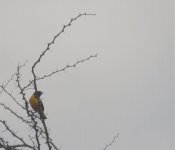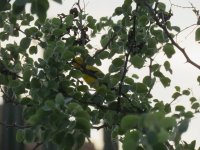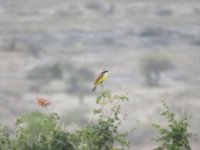Working within the photo quality, here's my take on these:
1- Golden-faced Tyrannulet. Jizz (particularly stubby wings and posture) and face pattern make me fairly confident of this, and it's a common bird there.
2- My gut impression is Black-and-chestnut Eagle. The paddle wings give an impression of Spizaetus or some of the Kites, and S isidori is the best fit. Was this photo from Salento itself or from Valle de Corcora?
3- Pin headed, the long straight tail, yellow legs visible in lightened photo, wing shape point me at Plain-breated (Sharp-shinned) Hawk. I have a hard time convincing myself that this could be a Hook-billed Kite or Double-toothed Kite, which are the only other things that spring to mind.
4- Summer Tanager. With that crest I don't see any way it could be Hepatic/Highland Hepatic/Tooth-billed (depending on your taxonomic / common name preferences).
5- Tourmaline Sunangel and Speckled Hummingbird
6- Female Long-tailed Sylph
7- Summer Tanager again for me. The blotchy look + the crest are pretty classic.
8- Pale-edged Flycatcher. I take it as an obvious Myiarchus and the pale edging on the folded wing and the pale outer edge of the outer rets are pretty definitive. It is also the most common Myiarchus in that area. Note that Apical Flycatcher (suggested above) would be out of range and out of habitat here.
9- Rusty-margined Flycatcher
10- Black-billed Thrush
11- A juv/female Spinus sp. With the color coming in on the throat a bit, the wing pattern, and the apparently lightly streaked breast I might guess more likely a Siskin, and perhaps Andean Siskin, but not really confident.
12- Despite the odd coloring in the picture the chest/belly pattern looks like what I would expect from Black-billed Thrush in that area.
13- Summer Tanager
14- Thick-billed Euphonia. eBird suggests it is very uncommon in Salento, but there's no doubt that is what the photo is of!
15- Ruddy Ground-Dove
Tatacoa photos:
16- I would go for dark morph Broad-winged Hawk or Short-tailed Hawk. Perhaps jizz looks more like Broad-winged, but I will admit I'm no expert on the fine points here, I've suffered telling them from White-throated Hawk enough times as well.
17- Velvet-fronted Euphonia
18- Yellow Oriole. It's the more expected species there, and what we can see of face/throat coloration points more at this species than others.
19- Great Kiskadee




